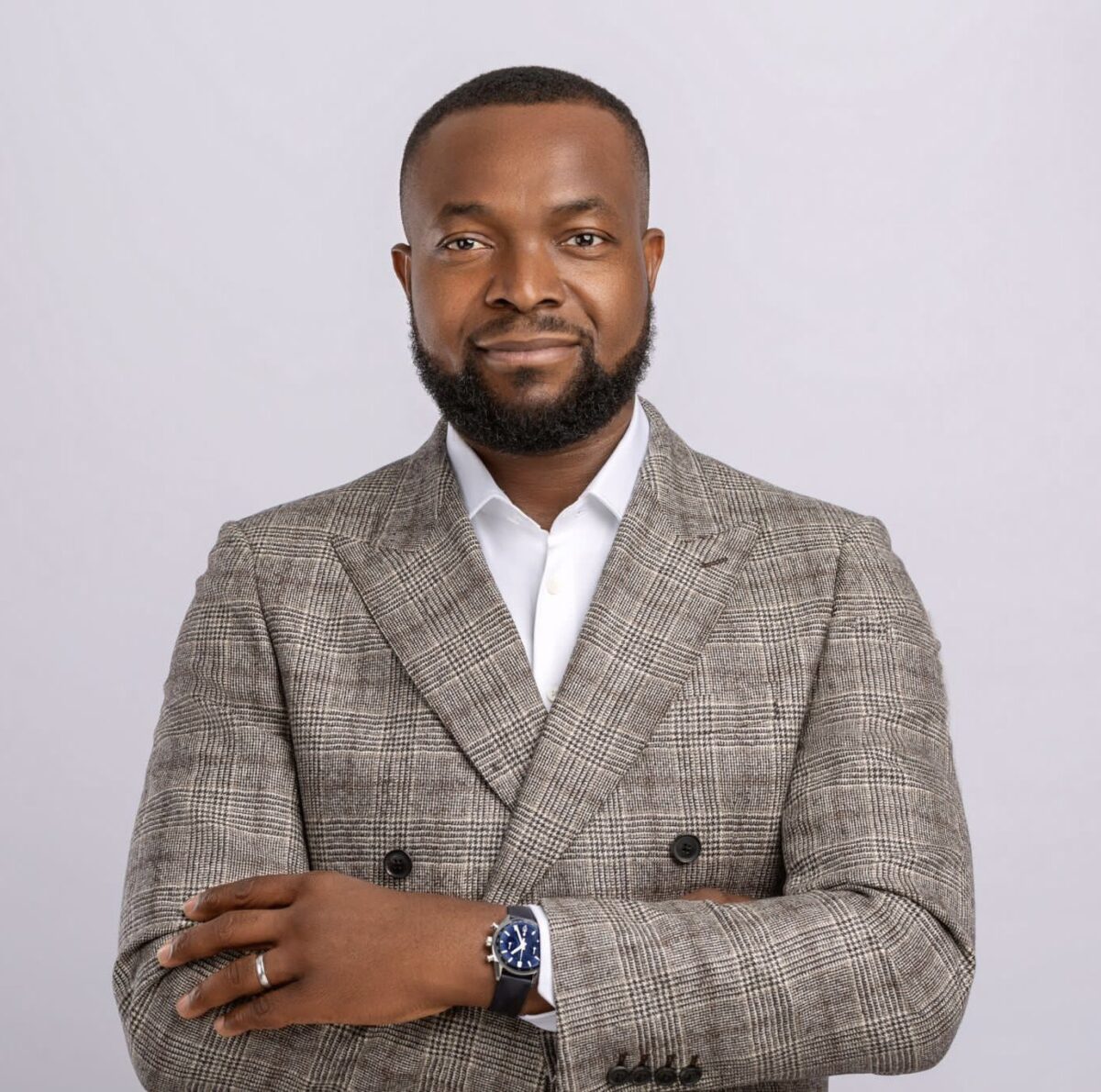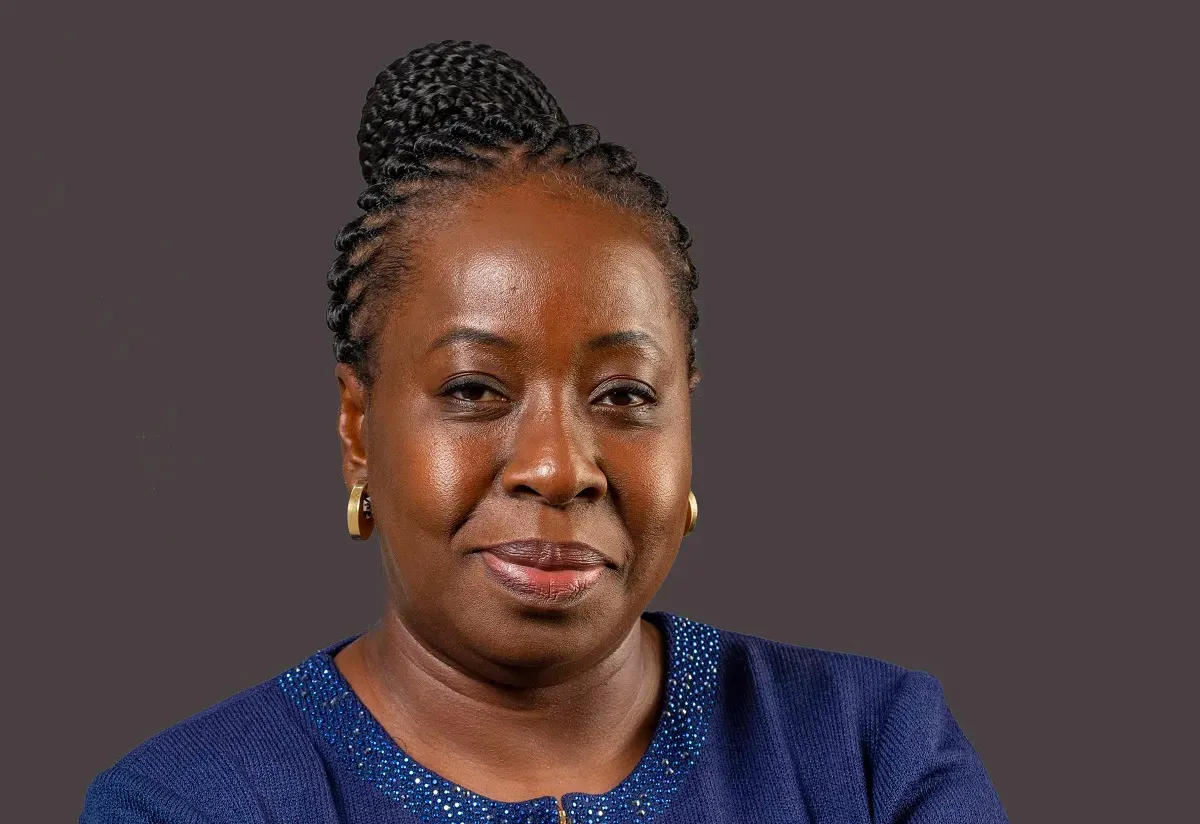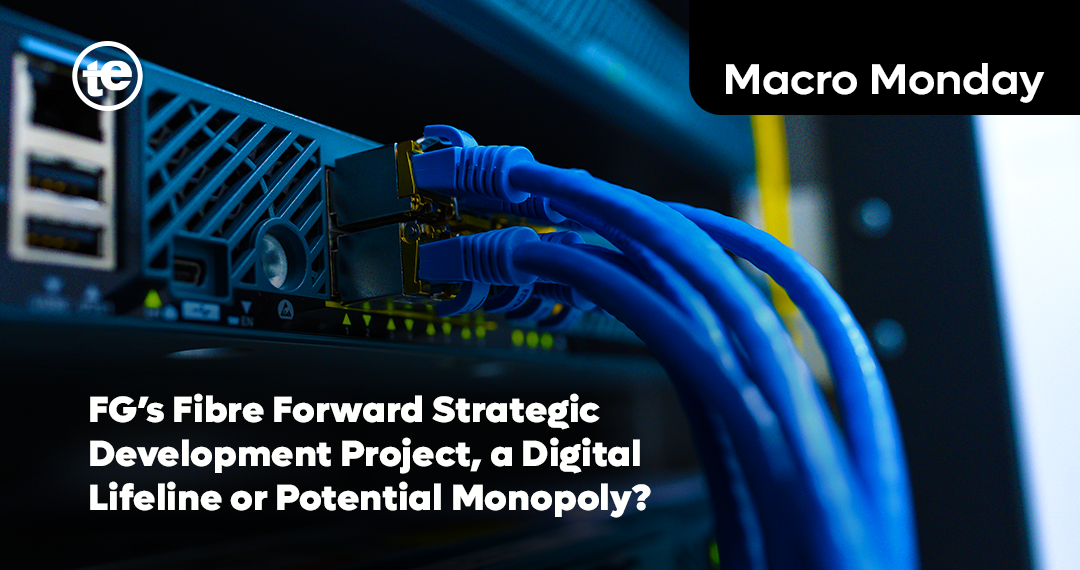On Thursday, April 27, 2024, Nigeria’s Federal Executive Council [FEC] made what could be called a daring move towards championing the third-largest terrestrial fibre-optic infrastructure in Africa.
The Fibre Forward Strategic Development Project, a $2 billion initiative, aims to expand the country’s fibre-optic infrastructure by a commendable 90,000 kilometres.
Undoubtedly, this is a potential game-changer for internet connectivity, economic growth, and digital inclusion in Nigeria. But do we see prospects of monopolies, last-mile challenges, and overall effectiveness? Well…
In recent years, Nigeria has had a big shoot in digital transformation initiatives, and the Fibre Forward Strategic Development Project is definitely one of them.
However, as with any large-scale infrastructure project, there are both pros and cons.
Can Nigeria Deliver?
Nigeria has a mixed history with large-scale infrastructure projects like the Ajaokuta Steel Mill launched way back to make Nigeria self-sufficient in steel production, among many others.
Delays and mismanagement were issues with past projects. These experiences leave some of us pondering on the feasibility and efficiency of the Fibre Forward Strategic Development Project.
Nevertheless, under the leadership of Bosun Tijani, the minister of Communications, Innovation, and Digital Economy, careful planning, and effective project management are expected to mitigate such risks.
It’s interesting to note that the Fibre Forward Strategic Development Project isn’t funded through borrowing, but relies on a $2 billion Special Purpose Vehicle (SPV) initiative. While this approach avoids immediate burdens on national debt, potential indirect tax implications are factors to consider, leading to issues about long-term fiscal impacts.

Impact on Local ISPs
The impact on local Internet Service Providers (ISPs) is another important consideration. Will the Fibre Forward Strategic Development Project empower them or squeeze them out? The project’s structure could inadvertently create a dominant player, weakening competition and innovation in the telecom space.
Therefore, a solid regulatory framework is important for Fibre Forward’s success. It must safeguard against anti-competitive practices, ensuring a level playing field for all ISPs and stakeholders.
A single entity controlling the fibre backbone could act as a gatekeeper, dictating terms to service providers (ISPs) and potentially limiting competition.
Key measures to curb this include mandating open access to the fibre network to facilitate competition and implementing strict antitrust regulations, ultimately preventing monopolistic behaviours and protecting smaller ISPs.
Combining Terrestrial and Submarine Cables
It needs to be emphasized that the crux of a robust internet backbone is the combination of terrestrial fibre optic cables and submarine cables.
While submarine communications cables are used to connect countries and continents to the Internet, terrestrial fibre optic cables are used to extend this connectivity to landlocked countries or to urban centres within a country that has submarine cable access.
Thus, in most of the world, a large number of such cables exist, often amounting to robust Internet backbones.
Meanwhile, the lack of such high-speed cables poses a great problem for most African countries. Therefore, the construction of both submarine cables and their terrestrial extensions is considered an important step towards economic growth and development in many African countries.
For record purposes, the list of terrestrial fibre optic cable projects in Africa currently includes, but is not limited to, Algeria, Angola, Benin, Botswana, Burkina Faso, Burundi, Cameroon, and Chad. Others are Côte d’Ivoire, the Democratic Republic of Congo, Ghana, Guinea, and Kenya, among others.
It is important to note that some of the terrestrial fibre-optic cables are managed by private organizations and government entities. For instance, Mascom started operations in 2013, and by 2018, it announced it would be laying Botswana’s first fibre-to-the-home service.
In Burkina Faso, Group Vivendi Africa, Onatel, and Orange S.A are major drivers of the terrestrial fibre-optic infrastructure. Onatel came on board in 2020 and is run by the state, while Orange S.A surfaced in 2021.
Stepping away from the terrestrial and submarine stories, the efficacy of telecommunication power or the internet, with its attendant ability to create opportunities and an ecosystem of employment for the teeming unemployed and under-employed Nigerians, is essential.

Private vs. Public
The argument has been raised: should this all-important project be driven solely by the Federal Government of Nigeria, or should the Federal Government co-opt industry practitioners?
Taking a cue from Mrs. Funke Opeke, the chief executive officer of MainOne [now, an Equinix], she noted that Nigeria is yet to make maximum use of its cable capacities. According to her, Nigeria has utilized less than 5% of its cable capacities, and the same applies to other cable operators such as Glo 1 and MTN WACS.
She lamented a situation where Nigerians have more than enough broadband capacities from the three cable operators, which is not being utilized in a country of over 160 million persons.
According to Opeke, broadband capacities remained low on the shores of the country, with less than 10 percent utilization.
She, however, said the fibre optic cable operators were able to reduce the cost of bandwidth. When compared to other African countries, Opeke said Kenya and Tanzania have gone far in internet access penetration because the governments of those countries built a nationwide infrastructure fibre optic cable backbone and allowed the private sector to run it at a determined low cost, ensuring that every Internet Service Provider (ISP) has equal access to available broadband capacities.
It is on record that so far, the eight subsea cables that have landed in Nigeria include MainOne cable with a capacity of 10 Tbps; ntel’s SAT-3 with 800 Gbps; Globacom’s GLO-2 (12 Tbps); Africa Coast to Europe Cable System with a capacity of 5.5 Tbps; WACS (14.5 Tbps); Equiano (144 Tbps); the Nigeria Cameroon Submarine Cable System (NCSCS) with a capacity of 12.8 Tbps; and 2Africa (180 Tbps).
As referenced above, investment in terrestrial fibre-optic infrastructure has often been a function of combined efforts between the government and private sector, with the government setting the pace, securing critical infrastructure, and regulating operations. We believe the Federal Government of Nigeria should involve industry investors and professionals to give the vision the necessary drive it deserves.
Pricing and Accessibility
Another vital point of emphasis regarding our subject of discussion is the centrality of pricing and access.
One of the sprawling effects of the 90,000 kilometres of fibre optics infrastructure, among others, is a technological boost, job creation, and the technological empowerment of the nation. This already mirrors an affordable pricing system and accessibility, which are key.
According to Surfshark, a cybersecurity company, Nigeria has one of the most unaffordable internet services in the world. It was ranked 119th for mobile Internet affordability out of the 121 countries surveyed. While the top ten European countries on the list only have to work for an average of 36 minutes, compared to Nigeria’s 175 minutes, to afford mobile Internet. However, the country’s rank for quality Internet is one of the highest in Africa.
The survey revealed that Nigerians have to work for one and a half days (over 35 hours) to afford the cheapest broadband Internet in the country. For context, that is 119 times more than in Romania, which has the world’s most affordable broadband Internet. People in Romania have to work for only 18 minutes to afford the cheapest broadband Internet in the country.
Where Africa’s most populous country ranked 99th globally for mobile Internet affordability, Angola held an impressive fourth position, South Africa ranked 63rd, Botswana ranked 61st, and Ghana was in 96th position.
In addition to the subject matter of affordability and pricing, which we hope the Federal Government of Nigeria will address squarely, it is also important to realize that factors such as infrastructure investment, regulatory environment, technological advancements, access to international bandwidth, economic factors, and operational and maintenance costs are determinants in setting the pace for the price mechanism. We believe these will be adequately taken care of through the balancing and alignment of the federal government’s lofty ideas, industry professionals’ insights, and current economic realities.
Security and Privacy of Data

Closely related to the above is the recurring question of security and privacy of data. An increase in connectivity will automatically pose higher risks to the people. The question begging for an answer, therefore, is, are these challenges pre-empted by the Federal Government of Nigeria?
For instance, 2021 data from the Nigeria Inter-Bank Settlement (NIBSS) noted that Nigerian banks lost N3.5 billion between July and September 2020 to fraud-related incidences, representing a 534% increase from the same period in 2019, when it was N522 million.
Meanwhile, the Financial Institutions Training Centre (FITC) record also indicated that the N2.09 billion loss recorded in Q4 was a 77.58% increase compared with N1.18 billion lost by the banks in Q3 2024. It also revealed that a total of 12,405 cases of fraud were recorded in Q4 2024. When compared to the 12,066 cases in Q3, this shows a 2.81% increase.
According to Ayotunde Coker, CEO of Open Data Access Centre (OADC), there is an increasing number of submarine cables, which means a lot of big data will be captured and will require massive storage capacity. This is responsible for the renewed deployment of capital into hyperscale mega data centres in the country.
The companies currently building hyperscale data centres in Nigeria include Kasi, Rack Centre, and OADC. Kasi Cloud Limited began construction of its hyperscale or Tier IV data centre, modelled after the Silicon Valley technology parks, in 2022. The facility, worth $250 million, will be located in Lekki, Lagos, and is expected to go live in 2024. Rack Centre, a Tier III data centre company, started building a 12-megawatt IT data centre at Ikeja, Lagos in 2023. The data centre is situated on a 20,000-square-meter greenfield site and sits at over 30 meters above sea level.
The construction of OADC’s hyperscale data centre began in 2022. The company is building a data center with a capacity of 24 megawatts of power. “You will see that from the end of this year, the facilities with hyperscale spec will become available, almost like every quarter into the year after. It is like the tipping point is happening,” Coker said.
Before now, most investors have built Tier III data centres, the second-highest certification in the Uptime Institute’s system of classifying data centre performance into four tiers. Tier III data centres, such as MainOne Data Centre and Rack Centre, offer additional reliability over Tier II in the form of N+1 redundancy and multiple power and cooling distribution paths.
Hyperscale data centres have much larger capacities and infrastructure. These facilities are massive business-critical facilities designed to efficiently support robust, scalable applications and are often associated with big data-producing companies such as Google, Amazon, Facebook, IBM, and Microsoft. Hyperscale data centres usually exceed 5,000 servers and 10,000 square meters.
While South Africa built the first hyper-scale data centre in sub-Saharan Africa seven years ago, in Nigeria, companies like Google, Microsoft, and Facebook store some of their data with data centres like MainOne. With the proliferation of data, therefore, comes the attendant problem of privacy and security, many of which have been mentioned above.
“Data is the new oil,” said British mathematician Clive Humby. This cannot be stressed enough. In today’s digital age, data is indispensable for the survival of any company, business, or entity.
That’s how important data has become for everyone. Steve Jobs, the visionary founder of Apple Inc., articulated his views on data privacy in 2010, defining it as “…means people know what they’re signing up for, in plain English and repeatedly.” With Nigeria’s exponential growth of the internet, which has sparked a surge in the demand for data within the Nigerian digital sphere, it is important to note that over 84 million out of Nigeria’s 200 million citizens have access to the internet. Hence, data has become a critical asset for every business operating in Nigeria.
However, the collection and storage of data present numerous challenges all over the world, including Nigeria.
For instance, in June 2023, a new data protection bill was signed into law by the Nigerian president, which legalized the regulations set by the Nigeria Data Protection Regulation (NDPR). However, like most laws, these regulations are continually evolving, which can become a challenge for businesses and digital companies to keep up with compliance.
Interpreting and implementing these regulations can be challenging even with the aid of a good lawyer, particularly for small and medium-sized companies with limited resources. There is also the issue of user consent and transparency. Additionally, data breaches are a major concern. In Nigeria, where internet cyber fraud, commonly referred to as “Yahoo Yahoo,” has become rampant, fending off cyber-attacks has grown increasingly challenging. Data breaches, often resulting from cyber-attacks like malware, phishing scams, and ransomware, have become all too common.
Consequently, service providers and product owners bear significant financial burdens due to the need to hire additional personnel to strengthen product security, provide comprehensive customer support to aid users in dealing with attacks and educate them on the importance of safeguarding their passwords.
In essence, as long as cybercriminals persist in exploiting product vulnerabilities and taking advantage of customers’ ignorance and naivety, data privacy will continually face a formidable threat. But what are the ways out of these teeming challenges? Since we cannot stop the proliferation of data, we can embrace regulatory compliance, implementation of data policies, regular audits, and user consent and transparency among other measures.
It’s important to note that transparency in decision-making and pricing structures is essential to build trust among investors, service providers, and the public alike. In this regard, Bosun Tijani’s inclusive approach to the Fibre Forward Strategic Development Project, and governance is commendable, enabling confidence and accountability among Nigerians.







Comments 1